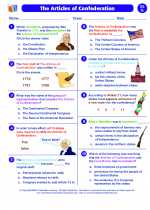The Articles of Confederation
The Articles of Confederation was the first constitution of the United States, adopted by the Second Continental Congress on November 15, 1777. It served as the governing document of the United States from March 1, 1781, until the U.S. Constitution took effect on March 4, 1789. The Articles of Confederation created a loose union of the thirteen independent states, providing them with a framework for cooperation and a system for conducting international relations.
Key Features of the Articles of Confederation:
- 1. Unicameral Legislature: The Articles established a unicameral legislature, known as the Congress of the Confederation, in which each state had one vote.
- 2. Limited Central Government: The central government under the Articles was intentionally weak, with no power to tax, regulate trade, or enforce laws.
- 3. State Sovereignty: Each state retained its sovereignty, freedom, and independence, with the central government acting only as a coordinator of state actions.
- 4. Defense and Foreign Affairs: The central government was responsible for handling foreign affairs, declaring war, and managing relations with Native American tribes.
- 5. Amendments and Ratification: The Articles could only be amended with the consent of all thirteen states, making it extremely difficult to make any changes.
Weaknesses of the Articles of Confederation:
While the Articles of Confederation provided the United States with its first experience in national government, it also had several significant weaknesses, including:
- Lack of Central Authority: The central government had limited authority and could not effectively enforce its laws or collect taxes.
- Financial Problems: The national government was unable to regulate trade or levy taxes, leading to financial instability and an inability to pay off war debts.
- No Executive Branch: The Articles did not establish an executive branch to enforce laws or provide leadership.
- Difficulty Amending: The requirement for unanimous consent to amend the Articles made it difficult to address the weaknesses of the government.
Impact on the Constitutional Convention:
The weaknesses of the Articles of Confederation ultimately led to the Constitutional Convention in 1787, where delegates from the states drafted the U.S. Constitution to create a stronger, more centralized government. The Constitution addressed many of the shortcomings of the Articles, providing for a system of checks and balances, a stronger central government, and mechanisms for amending the document.
Study Guide Questions:
- What were the key features of the Articles of Confederation?
- What were the weaknesses of the Articles of Confederation?
- How did the weaknesses of the Articles lead to the Constitutional Convention?
Use these study guide questions to review the key concepts and historical significance of the Articles of Confederation. Understanding this topic is crucial for gaining insight into the early development of the United States government and its journey towards a more perfect union.
[The Articles Of Confederation] Related Worksheets and Study Guides:
.◂Social Studies Worksheets and Study Guides Seventh Grade. The Articles of Confederation
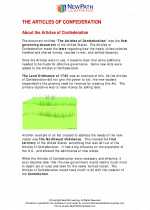
 Worksheet/Answer key
Worksheet/Answer key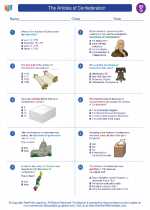
 Worksheet/Answer key
Worksheet/Answer key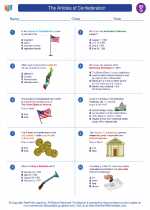
 Worksheet/Answer key
Worksheet/Answer key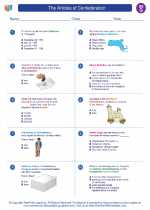
 Worksheet/Answer key
Worksheet/Answer key